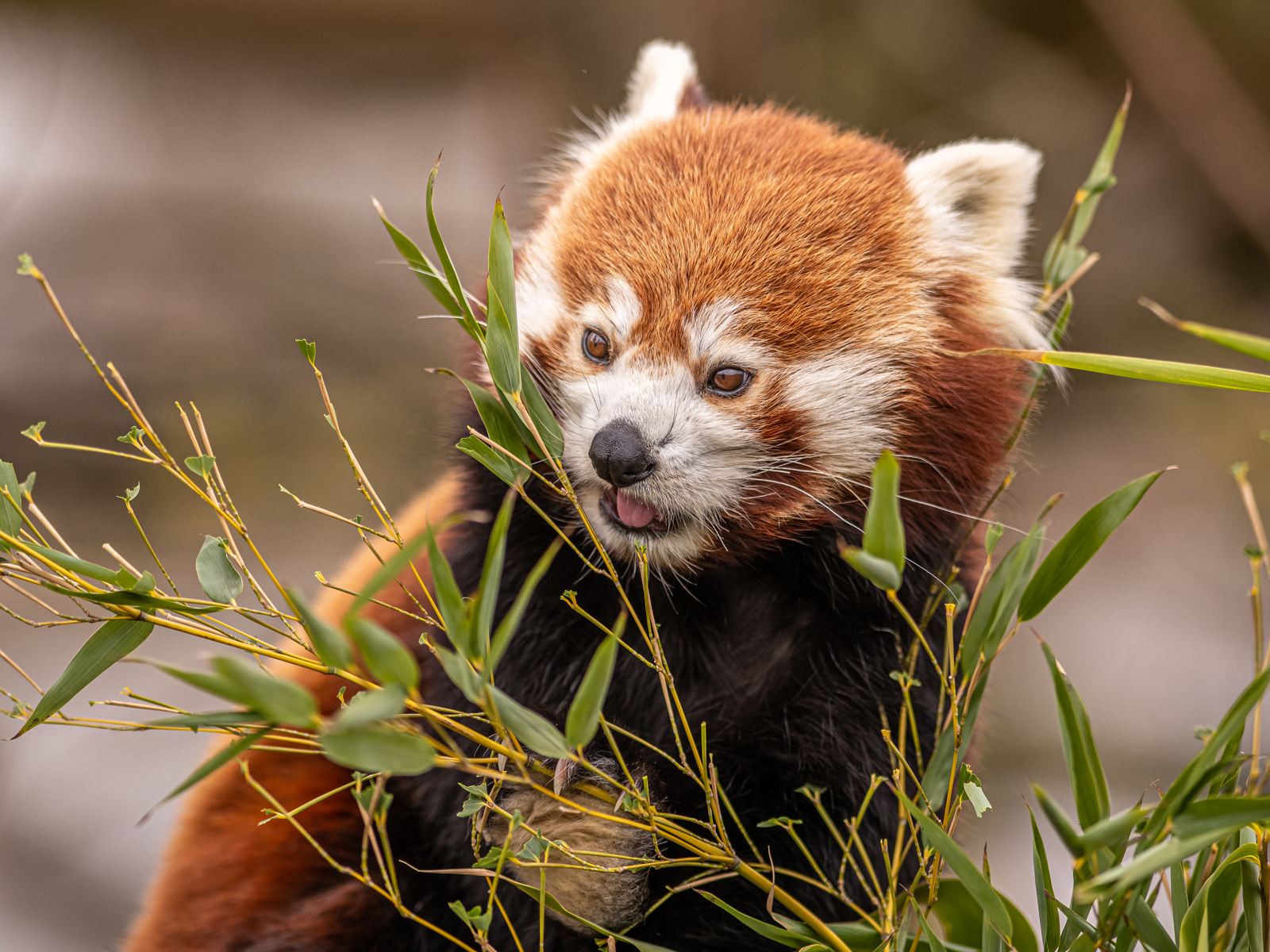
Red Panda
Ailurus fulgens

-
Size
Up to 6 kg
-
Distribution
Himalayan forests
-
Diet
Herbivore
As you hike through 'Himalayan Pass' look up into the trees and spot the adorable Red Panda sisters: Alice, Ariel and Aurora.
The Red Panda trio were born in June 2019 and live in the ‘Himalayan Pass’ reserve. They all have their favourite spot to sleep high up in the trees.
Despite their species name, Red Pandas are not closely related to the Giant Panda – they are most closely related to Weasels and Racoons.
Their curved sharp, semi-retractile claws and an extension to the wrist form a false thumb to help them manipulate bamboo. They can also rotate their ankles to control their vertical descent from trees.

Where in the park?
Venture through Himalayan Pass and discover the amazing temperate valley forests of Southern Asia.

Species
Red pandas were identified and named ‘Panda’ around 1826, almost 40 years before Giant Pandas who got their name due to having similar eating habits to the Red Panda!
Their habitat includes deciduous and conifer forests with an understory of bamboo on the mountain slopes and valleys of the Himalayas in Asia.
Did you know?
They leave droppings in particular places and have glands on their feet to leave smelly marks that give information to their neighbours.

Breeding
Red Pandas build a nest in a hollow log or rock crevice and usually give birth to 1-4 cubs.
Numbers
There are less than 10,000 Red Pandas remaining in the wild.


Red Panda Experience
Meet our Red Pandas, prepare their favourite food, and explore the reserve!






